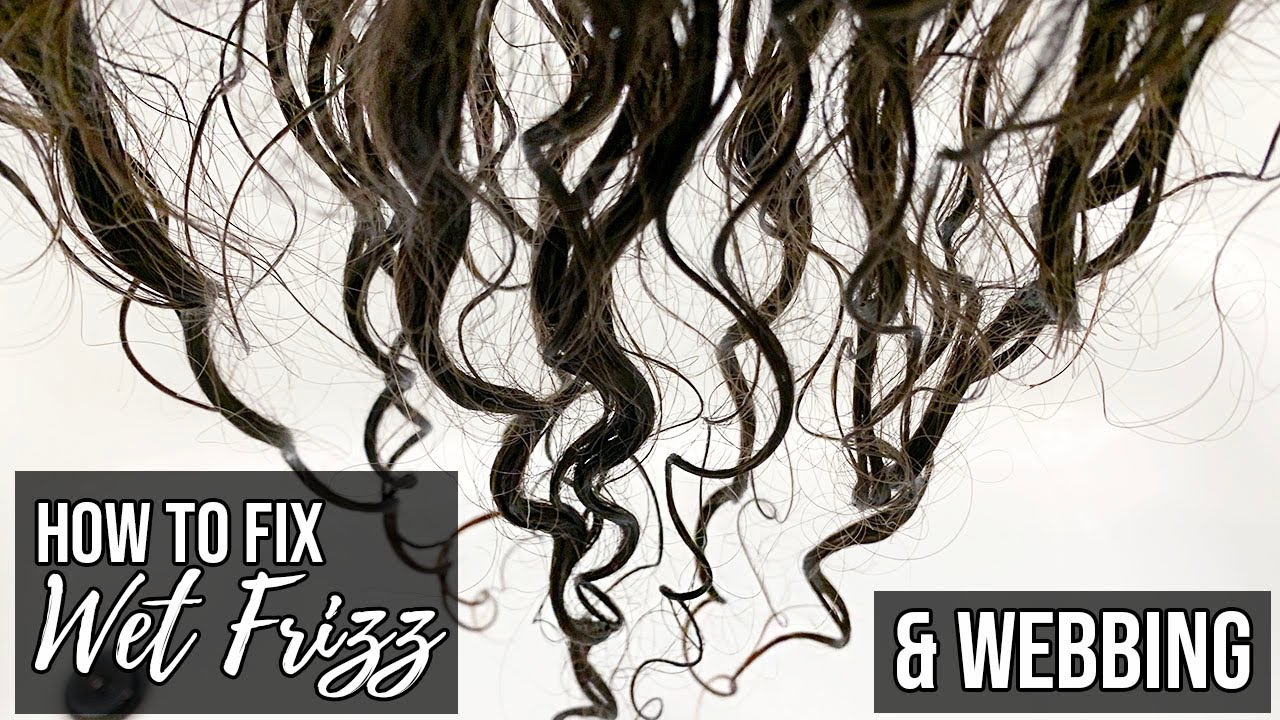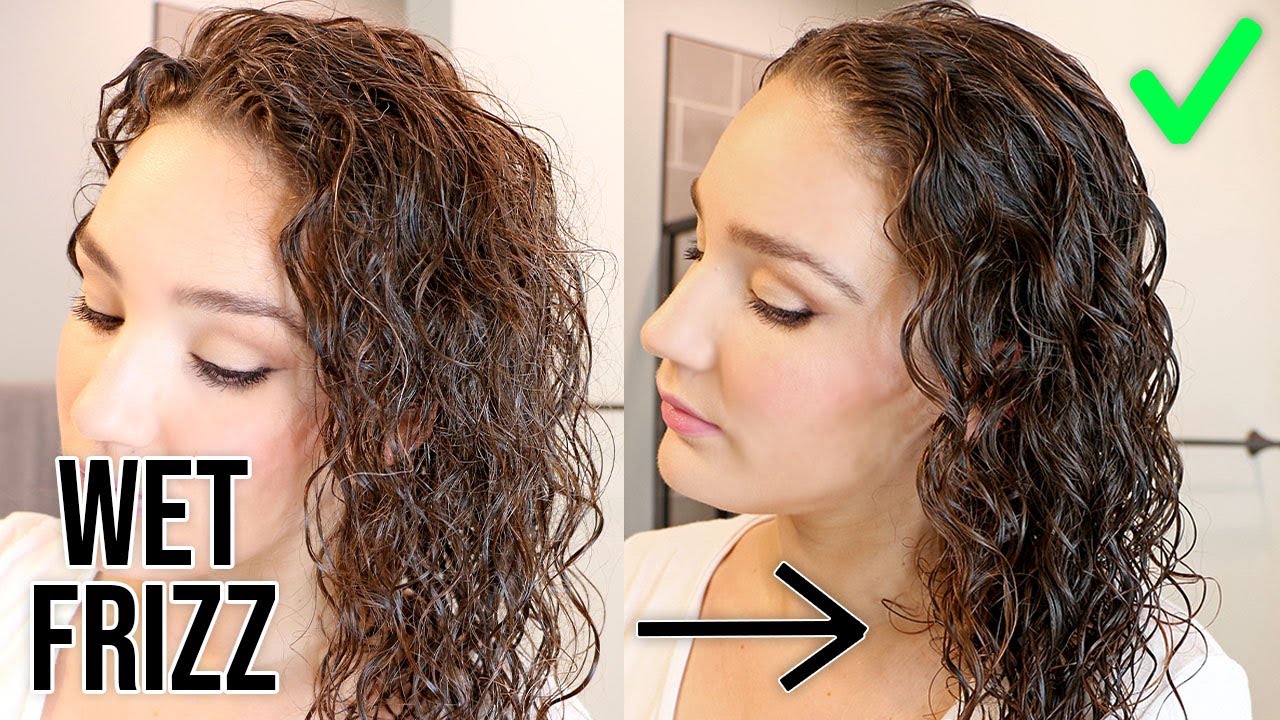
Wet frizz has reared its ugly head in nearly all of our lives at some point. It can turn a potentially glamorous hair day into an epic failure.
Frizz is so complex in all of its forms that some types of frizz have their own name. This article will address a dreaded form of frizz known as wet frizz.
Table of Contents
What Is Wet Frizz?
Wet frizz is the frizz that you encounter when your hair is still wet. Wet frizz causes hair strands to appear stringy and dry rather than smooth and sleek.
If you look closely at your frizzy hair while it's wet, you'll notice individual hair strands going haywire, laying in multiple directions. This state of the hair can make styling difficult and put a damper on your day.
The science behind wet frizz is summed up by the condition of the hair's cuticle layer. The cuticle is the outermost layer of the hair and controls the amount of moisture and products that enter and exit the hair.
If you were to look at the cuticle layer under a microscope, it would look like a set of fish scales. A normal, healthy cuticle layer will have "scales" that are uniform and intact.
Hair strands affected by wet frizz have compromised cuticle layers. The layers are more raised than usual, which affects the ability of the hair to retain moisture.
A damaged cuticle layer cannot hold onto moisture when exposed to water during washing, leading to dry and stringy strands.
All hair types, textures, and lengths can be prone to wet frizz. Some people tend to associate wet frizz with just curly hair in particular. But no one is exempt from the occasional bout of wet frizz.

Types of Wet Frizz
Wet frizz comes in various forms, all distinguished by name. Some people deal with just one type of wet frizz; others deal with multiple. Review the list below to identify a few kinds of wet frizz:
- Halo Frizz: This type of frizz typically occurs at the crown of the head. Halo frizz can make laying your edges and baby hairs nearly impossible. You can still experience halo frizz even if the mid-lengths and ends of your hair are tamed.
- Spider Web Frizz: Webbed hair strands appear mainly in the mid-lengths and ends of the hair. The wild nature of wet frizz makes individual strands wrap around each other to create a matrix that looks like a web.
- Surface Frizz: Surface frizz likes to camp out on the outer layers of the hair.
- End Frizz: This form of frizz can be found at the ends of hair strands.

What Causes Wet Frizz?
If you've dealt with wet frizz wash after wash, the frustration may lead you to rethink your entire hair care routine. But before you do that, you should know what is likely causing your wet frizz debacle.
The culprits behind wet frizz can be challenging to pinpoint, but this section will make it much easier. Read on to learn some common causes of wet frizz.
Note: If you're more of a visual learner, we recommend watching the video series below by Gena Marie. She does a good job of explaining the causes of wet frizz (and webbing) and she discusses a regimen to mitigate wet frizz.
Dry Hair
Dry hair is one of the leading causes of wet frizz. When hair strands are starved of moisture, they lose their pliability and begin to do their own thing.
To see if dry hair is the culprit behind your wet frizz, examine your hair when it’s dry. If your hair feels dry, crunchy, or rough to the touch, dryness could be your issue.
Heat Damage
Heat is a double-edged sword when it comes to hair care. Heat can help open up hair strands, preparing them to receive and retain moisture. But overheating the hair can do irreparable damage to hair strands, making moisture retention almost impossible.
Heat damaged hair breaks off easily, resulting in split ends and frizz that are more apparent when the hair is wet.

Buildup
There are various forms of buildup that lead to wet frizz. Haircare products, chemicals, dead skin, dirt, and oil form residue on the hair that repels the moisture that hair strands desperately need.
Styling hair with products filled with dense oils and butters blocks the cuticle layer from receiving moisture. One source of buildup that is tough to control is the water you use to wash your hair.
Depending on where you live, your water could contain high amounts of harsh minerals, including calcium. The hard water you constantly wash your hair with may start to leave a subtle buildup on the hair and scalp, leading to wet frizz.
Note: From a product standpoint many ladies use the Curly Girl Method to create a hair care regimen with gentle styling products. Click here to learn more about the Curly Girl Method.
High or Low Hair Porosity

Hair porosity is how well your hair strands retain and release moisture. The functioning of the cuticle layer determines the porosity of your hair.
Everyone's level of hair porosity is different. But most people have either high or low porosity hair. The level of your hair's porosity can determine how problematic wet frizz will be for you.
- Low porosity: People with low porosity hair have a cuticle layer that is almost completely sealed, making it hard for moisture to enter. This leads to dryness, a major cause of wet frizz.
- High porosity: People with high porosity hair have a cuticle layer that is significantly raised. This allows moisture in easily but makes it hard for hair strands to retain moisture, causing wet frizz.
- Medium porosity: Those with medium porosity hair retain moisture well because the cuticle layer functions correctly to open and close when necessary.
Since few people have medium porosity hair, wet frizz remains a nagging issue in the natural hair community and beyond.
How To Tame Wet Frizz
Wet frizz is tenacious, but it can be defeated. The key to winning the battle against wet frizz is to take preventative measures. Some of these tips can give you immediate results; others may require consistent repetition. Read the list below for suggestions on how to tame wet frizz.

Avoid Tough Brushes
It can be tempting to grab the roughest brush you can find to tame your hair. But brushes with stiff bristles can be too harsh for your delicate strands.
They may help you get through what seems like endless tangles, but your cuticles will pay the price in the end, leaving the hair brittle and frizzy.
Opt for a wide-toothed comb or your fingers instead to detangle your hair after washing and during styling. You'll experience less wet frizz if your hair cuticles are healthy.
Try a Sulfate-free Shampoo
Sulfates, found in many shampoos, create the suds and lather that many people associate with cleanliness. Unfortunately, sulfates dry out your hair because of the damage they do to the cuticle layer.
Sulfate-free shampoos will not only cleanse the hair but some work to repair the cuticle layer. A healthy cuticle layer will help keep moisture levels balanced, reducing the incidence of wet frizz. After shampooing we recommend incorporating a deep conditioning treatment into your hair care regimen.

Dry Hair Carefully
Even if you use the best products out there, you can ruin your hair strands by drying your hair improperly. Most people have a tendency to wring their hair out like a towel after washing it to remove as much water as possible.
The friction generated by wringing the hair out quickly damages the cuticle, leading to wet frizz and damaged strands. Squeeze gently with a microfiber towel, and never wring or twist your hair. Doing so will minimize damage, and consequently, dry frizz. Air drying is also another option if you're not in a rush.

- How To Get Rid of Hair Webbing
- How To Make Your Hair Fluffy
- How To Get Rid of Poofy Hair
- How To Fix Frizzy Braids
Now that you've been educated on how to deal with your wet frizz, ditch those old habits and take control of wet frizz once and for all.
We hope that this article has addressed your most pressing concerns about wet frizz and wish you the best as you take steps toward more informed haircare.






